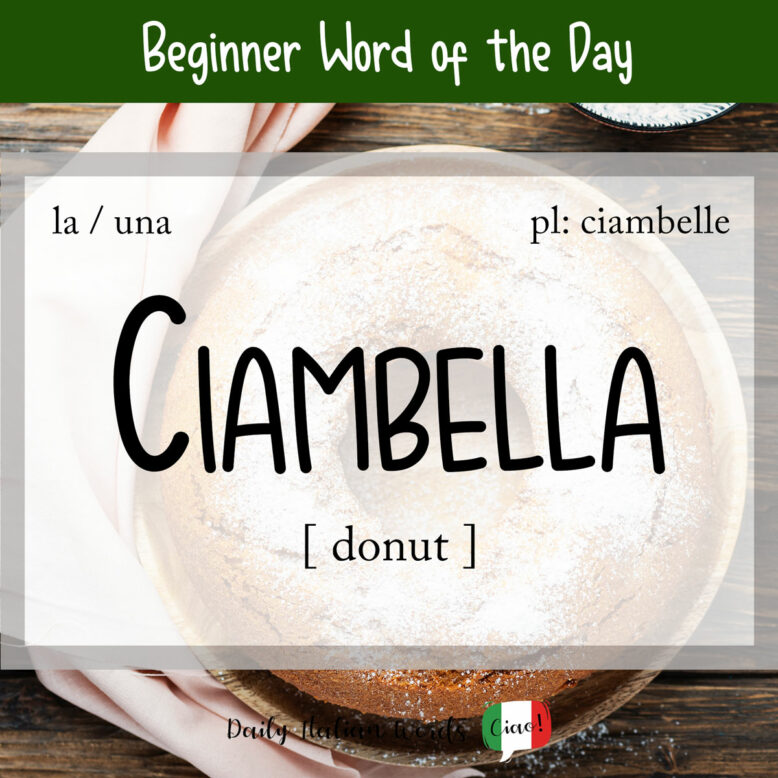In Italian, ciambella (feminine, plural: ciambelle) refers to any kind of round ring-shaped cake, pastry or cookie. From the American-style donut, also known as a ciambellina (lit: little ring), to the classic Italian ciambellone cake, pretty much any dessert with a hole in the middle falls into this category!

In its very basic form, the ciambella is prepared using:
The preparation method tends to vary from region to region, as do the ingredients. In Calabria, for example, they typically make their ciambelle at Christmas using flour and boiled potatoes (patate bollite), whereas in Tuscany, there is a dessert called ciambellino, which is a ring of crumbly dough (pasta friabile) made from egg and flour.
La mamma sta preparando una ciambella al cioccolato.
Mum is making a chocolate ring-shaped cake.

Also popular is the ciambelle, small ring-shaped cookies made with fresh cream, generally eaten at breakfast.
By extension, ciambella can be used to describe any object similar in shape to a donut including:
- teething rings for babies, also known as a dentaruolo
- lifebuoys or lifebelts, known as a ciambella di salvataggio or salvagente
- donut pillows, known as cuscino a ciambella
- circular pads for carrying loads on one’s head, also known as a cercine
If you’ve lived in Italy for any length of time, you will probably have come across the proverb non tutte le ciambelle riescono col buco (lit: not all donuts come out with a hole) at some point. It means ‘not all things are destined to turn out well’, and most closely equates to the English idiom ‘you win some, you lose some‘.
Non tutte le ciambelle riescono col buco.
Not all things are destined to turn out well.
Heather Broster is a graduate with honours in linguistics from the University of Western Ontario. She is an aspiring polyglot, proficient in English and Italian, as well as Japanese, Welsh, and French to varying degrees of fluency. Originally from Toronto, Heather has resided in various countries, notably Italy for a period of six years. Her primary focus lies in the fields of language acquisition, education, and bilingual instruction.


